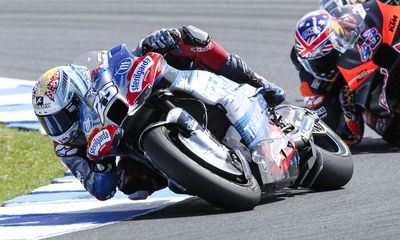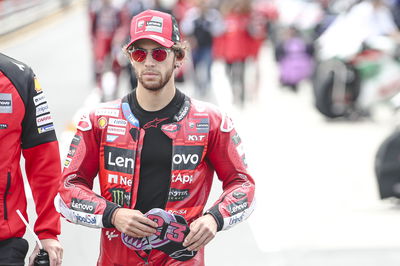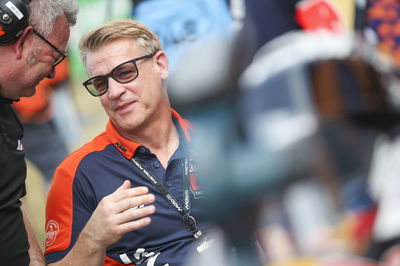“A nice surprise”: Raul Fernandez on riding MotoGP bike without wings
“It's amazing... zero physically"

Raul Fernandez took advantage of an exception to the MotoGP rules and raced without wings on his Trackhouse Aprilia last Sunday at Phillip Island.
While the strict MotoGP homologation regulations mean fairing design can only be modified once per season, ‘At certain circuits, for safety reasons it will be permitted for teams to remove the side pods from the aero body.’
Phillip Island is the only track on the present calendar where removal of the aero is allowed, due to past concerns over strong crosswinds.
The wind was not a significant issue last Sunday, and some riders believe the extra downforce helps with stability in such conditions, but Fernandez and Aprilia still chose to remove his sidepods to gather data on how the RS-GP performed without aero.
The experiment didn’t start well with Fernandez plummeting from sixth on the grid to 17th. But he then worked his way back up to ninth before losing a place to Fabio Quartararo in the closing stages.
Fernandez was less than three-seconds behind the fully winged RS-GP24 of Maverick Vinales, in eighth place.
“It was a nice surprise,” Fernandez said at Buriram in Thailand on Thursday. “We understood a lot of things about the bike, that now we're struggling [with] a lot. So it was a good test for the future.”
The Spaniard confessed to being surprised at how competitive he was.
“I did 5 laps in the morning with no wings and then I was directly into the race. The first lap I was 17th because our start is not the best thing in the bike. But after that, the pace was really good, really competitive,” he said.
“I saw all that almost all the race the distance to the top 4 was the same, so the pace was more or less to be there. With the bad start, I couldn't fight there, but the pace was to be there. So really happy.”
Fernandez, who made his MotoGP debut with Tech3 KTM in 2022, had never ridden a MotoGP bike without wings before.
“It was like a joke in the middle of the season to say, ‘maybe in a test we can try the bike with no wings’. But at the end, in Phillip Island, it was not a joke!” he said.
“It's different to ride the bike. Because of that, lap by lap I felt better. And my last part of the race was quite fast.”
While aero helps with anti-wheelie, turning and braking performance, Fernandez said that without the downforce parts the physical effort required to change direction was “zero”
“Always after the race weekend and the long race, I feel super tired. But I finished the [Phillip Island] race and I told the team, ‘I can do another race if you want!’
“It's amazing. It's 'zero' physically, the bike and that is something that maybe we need to work on more for the future [aero design].”
Aprilia test rider and stand-in team-mate Lorenzo Savadori revealed he has also tried the RS-GP without wings, during private testing.
The Italian explained that the fast and flowing Phillip Island layout means the usual aero benefits don’t apply.
“Phillip Island is a special track, unique, a lot of high speed. There isn’t a hard braking. In a normal track, of course, I prefer a lot the wings,” Savadori said.
“The wings a lot on braking, entry, wheelie, and in general it’s better in every place. But Raul was fast in Phillip Island, so it was a good result for him and also the engineers have some data [to consider for the 2025 aero].”












